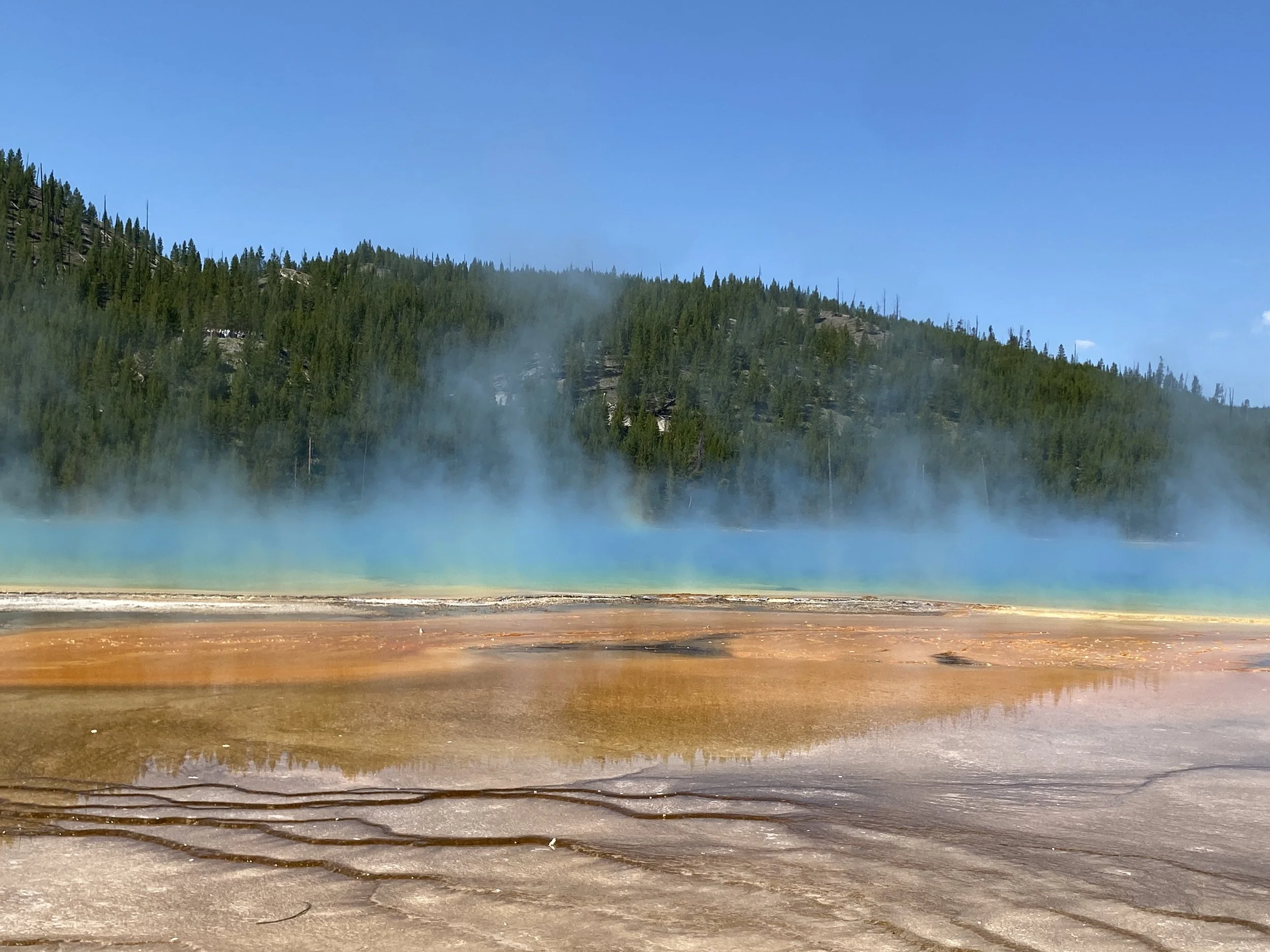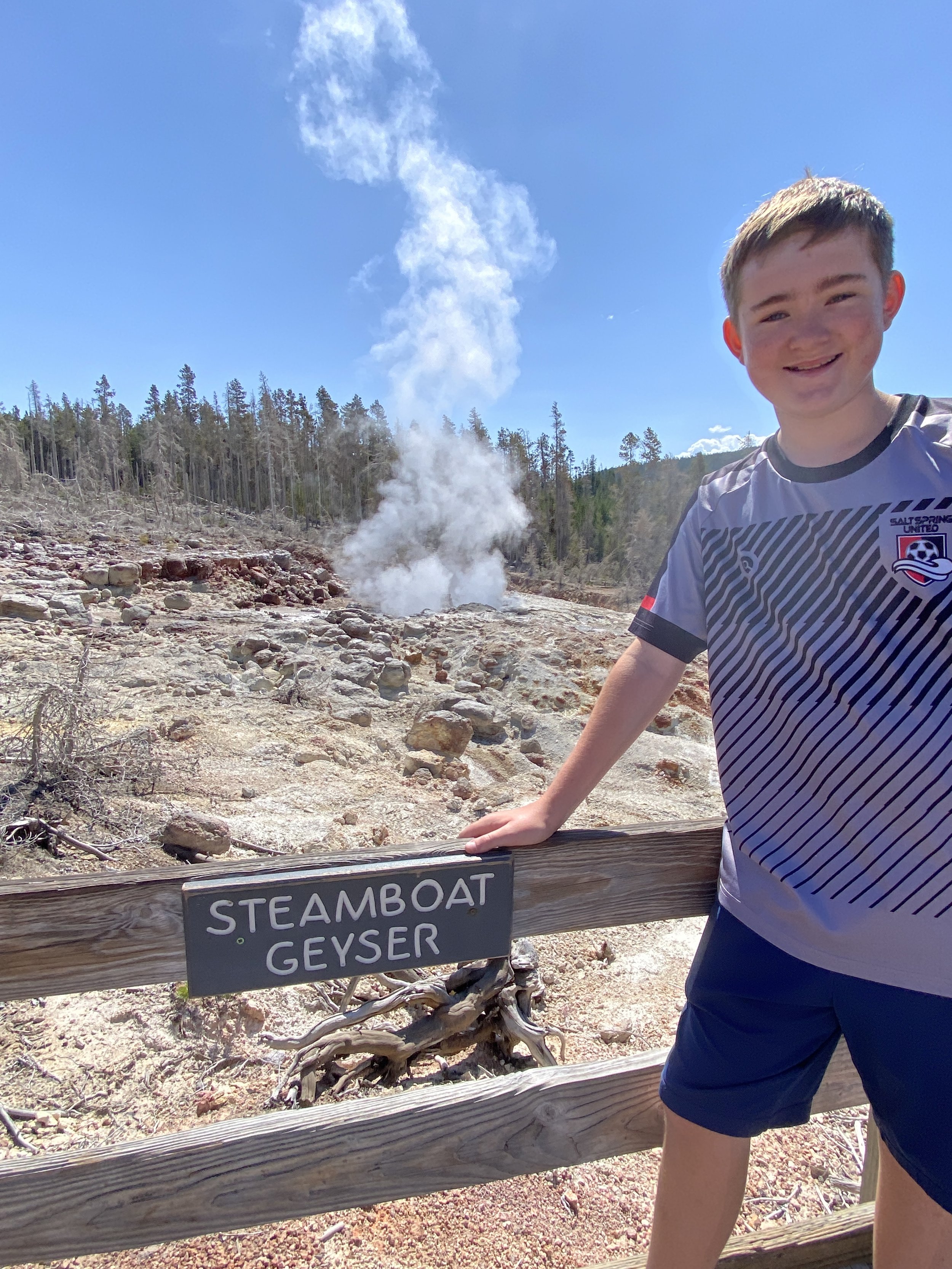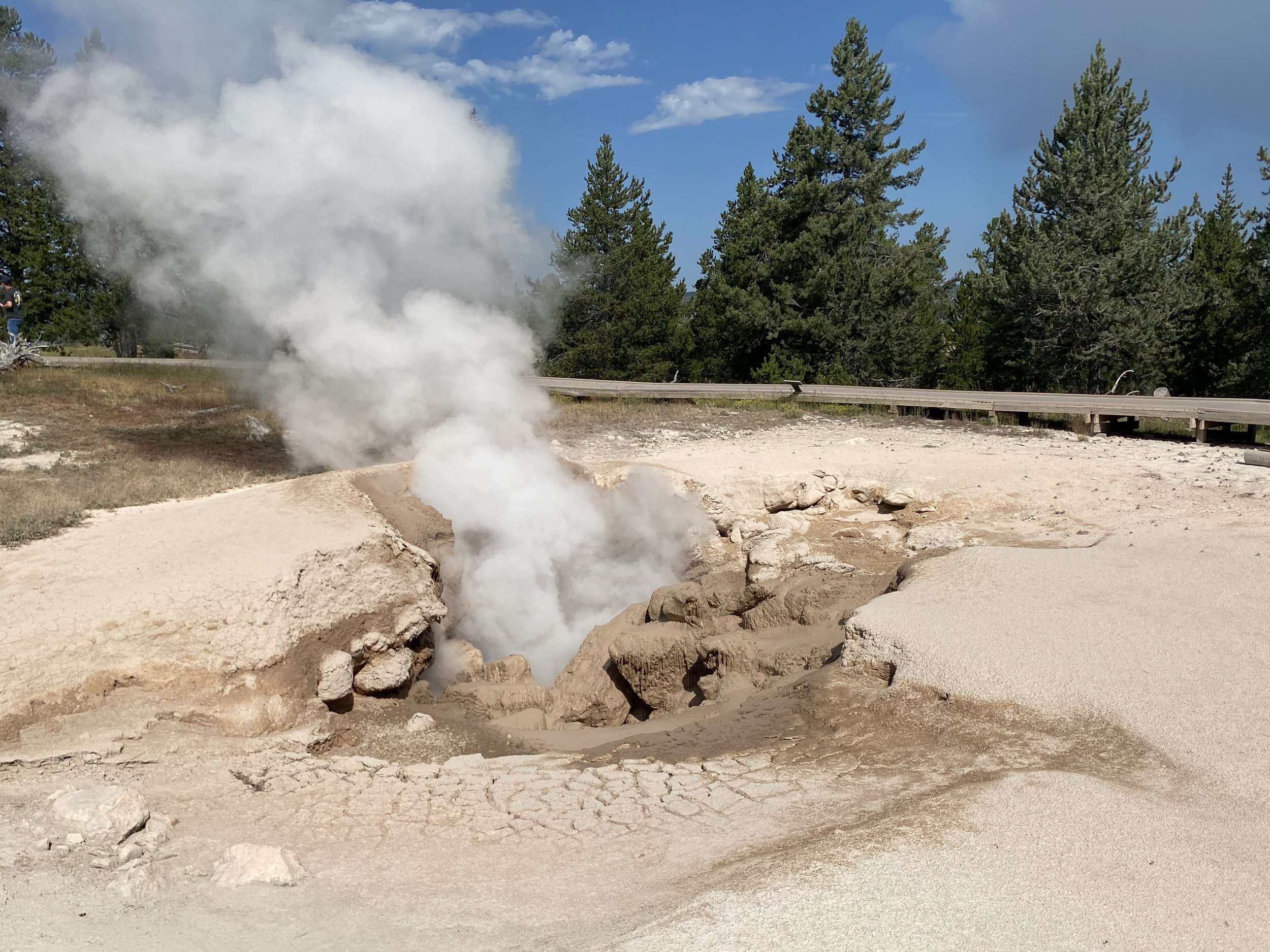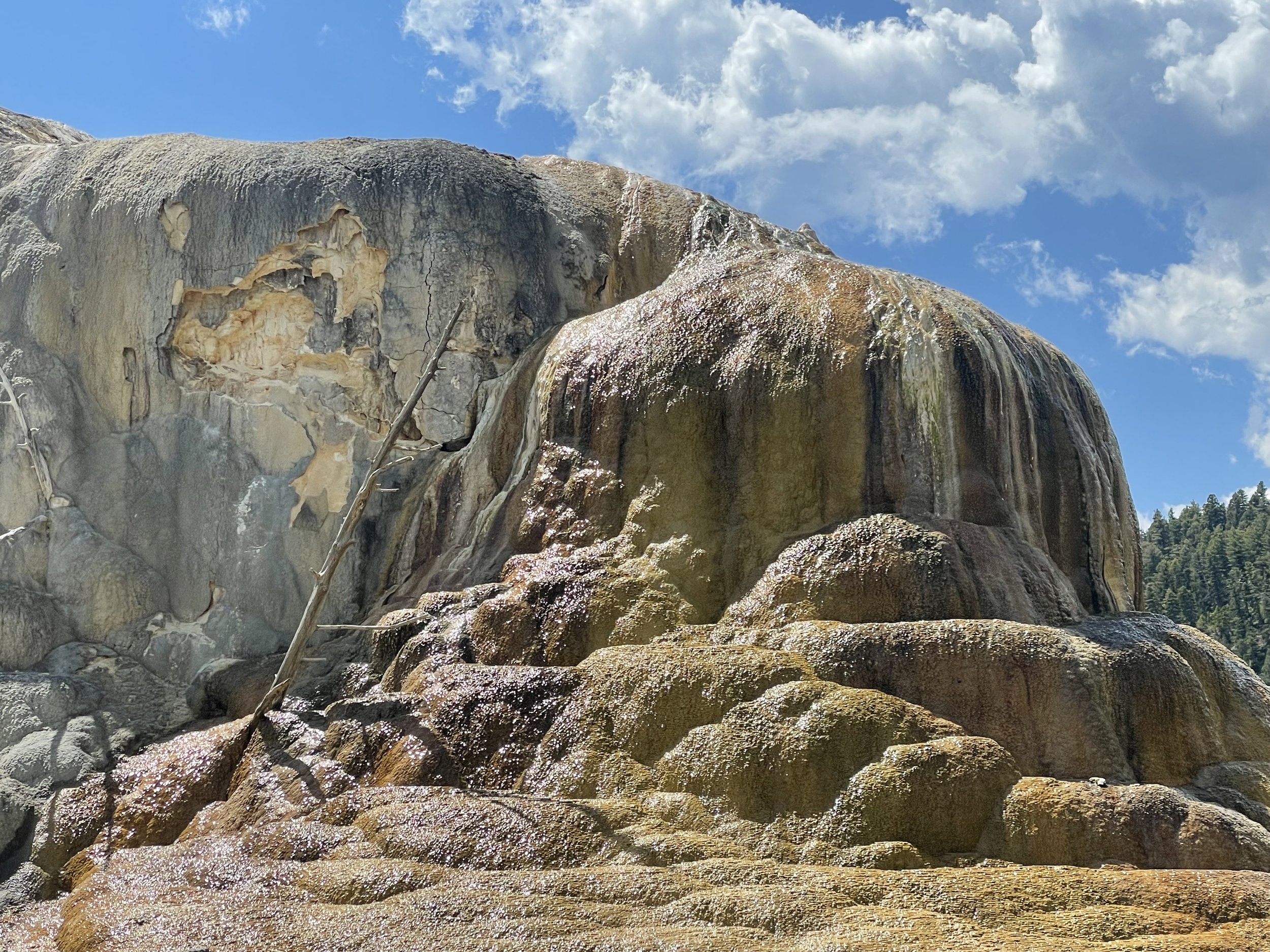Over the years we’ve visited Yellowstone National Park several times. One time was in September and we got caught in a surprise dump of snow while camping.
Another time was while the park was on fire. Started by lightning and fuelled by drought, the infamous Yellowstone fires burned for more than 3 months and affected approximately 800,000 acres or 36% of the park - making the fire fighting efforts the largest in the United States at that time.
So, to us Yellowstone has always seemed extreme. It also was the world’s first National Park. That was thanks to a broadminded artist named George Catlin. He worried about the impact of America's westward expansion on Indian civilization, wildlife, and wilderness. ‘They might be preserved’, he wrote, "by some great protecting policy of government... in a magnificent park.... A nation's park, containing man and beast, in all the wild and freshness of their nature's beauty!”
And that’s what happened… Politicians ran with it and, in 1872, the world’s first National park was born to “preserve unimpaired the natural and cultural resources and values of the National Park System for the enjoyment, education, and inspiration of this and future generations”.
We decided to take our own future generation, our two grandchildren, on a trip to this unique natural area. The entire area of Yellowstone is a supervolcano. One of the world’s largest active volcanoes lies beneath Yellowstone. It’s a weird feeling to realize that you are driving into an active caldera.There is no steep wall with a visible crater but a huge, active area just under the surface. The first major eruption occurred some 2 million years ago and covered more than 5,790 square miles with ash. And while the volcano is still active, it’s been about 70,000 years since the last lava flow.
Even though lava does not flow here, there are many other active geothermal features throughout the area. In fact, half the world’s hydrothermal features are found at Yellowstone. The Park preserves more than 10,000 of them — spouting and steaming geysers, hot springs, mudpots and fumaroles.
Wanting our grandkids to see these natural wonders, we left home and drove some 1,500 kms, spending a night at Christina Lake, BC and Missoula, Montana before arriving. We stopped at numerous skateparks along the way!
I had done a lot of research into a place to stay and booked the Yellowstone Country Inn in the town of West Yellowstone. This is in Montana while most of the park is in Wyoming! It was one of the most reasonably priced hotels, looked nice with a log cabin finish. It turned out to be in the perfect location in town. We had a large room with a fridge and a microwave. Restaurant prices have really gone up in the last few years so we ordered pizza one night, and found a salad bar for another night. We were able to walk anywhere in town - included a multitude of tacky souvenir shops.
We visited the Information Centre in town on the first night and bought a 7 day pass for the park for 35.- (the lowest entry fee, for a car load). Then we decided to go see the IMAX movie called Yellowstone. That really gave us a good impression on the history, the making of the park, the opening up of the west and the geo thermal features we would see.
The next morning we left early, hoping to beat the crowds. That was not to happen! Traffic was backed up right into town as we crawled in a long traffic jam toward the entrance gate just outside the town of West Yellowstone. It was a good thing we had bought our pass before since this allowed us to use a ‘fast’ lane.
Once inside the park, the traffic dispersed a little bit but at most features it was difficult to find a parking space and we moved in crowds all day. At all sites, we had to crawl in a line and wait for someone to leave before we could park. I’ve never seen the park so crowded and this was likely also the reason we saw little wildlife.
A lone bison but lots of wildflowers.
The park is divided into several loops to drive along the main sites. There’s also a lot of backcountry to explore on foot. We chose to drive the southern loop on our first full day in the park. From Madison we drove south. This takes you along meadows and rivers - the Madison and Firehole Rivers. We spotted only one bison instead of the, fairly common, herds of bison. The Lower and Midway Geyser basins are impressive samples of surface volcanic activity. We followed the boardwalk to see bubbling mud, steam rising and water spouting, sometimes noisily. Of course we took a seat on one of the many benches surrounding Old Faithful - the most predictable and iconic geyser. We waited in the hot sun for almost an hour but it was worth it - starting slowly and working up to its full height of some 180’, this geyser never fails to impress.
Old Faithful.
Our favourite feature was the Grand Prismatic Spring at Midway Geyser Basin - in brilliant rings of brown, red and orange against aqua blue and green. Even the steam rising on this pool is tinted in bright hues.
We hoped to witness an eruption of Steamboat Geyser, which is the largest in the world. But it is not predictable and can take from 3 days to 50 years between eruptions. So we didn’t wait…
On our second full day we drove the northern loop to Mammoth Hot Springs. The accumulated mineral deposits here form enormous mounds, oozing hot waters - an amazing, otherworldly sight. Some of the mounds are tinted brown and orange, while a large lower section resembles a gigantic mound of sugar cubes.
Mammouth Hot Springs, photo by Nico.
And while there are impressive lodges and visitor centres in several locations, we stuck mostly to the natural features. And, besides the geo thermal features, there is also the awe inspiring Grand Canyon of the Yellowstone River. Created by erosion from the Yellowstone River, the canyon is more than 1,000 feet deep, 1,500 to 4,000 feet wide and roughly 20 miles long. One of the most photographed views in Yellowstone is the canyon from Artist Point with its amazing view on the cascading, thundering falls.
Altogether our visit to the Park was fantastic. But next time I would try to avoid the crowds and heat of July!
RESOURCES:
You can download an App to plan your trip: https://www.nps.gov/yell/planyourvisit/app.htm
https://www.nps.gov/yell/index.htm
https://www.nps.gov/yell/planyourvisit/explore-mammoth.htm
BOOKS:
https://nationalparkobsessed.com/books-to-read-before-visiting-yellowstone-national-park/











